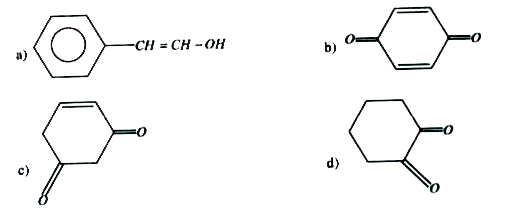Discuss the following trends in halogens.
(a) atomic radius
(b) ionisation potential
(c) electron affinity and
(d) electronegativity. Solution in Telugu
Step by step video & image solution for Discuss the following trends in halogens. (a) atomic radius (b) ionisation potential (c) electron affinity and (d) electronegativity. by Chemistry experts to help you in doubts & scoring excellent marks in Class 11 exams.
Updated on:21/07/2023Topper's Solved these Questions
- PERIODIC CLASSIFICATIONBOOK - AAKASH SERIESCHAPTER - PERIODIC CLASSIFICATIONEXERCISE - SUBJECTIVE EXERCISE - 2 (SHORT ANSWER QUESTIONS)
13 Videos
- PERIODIC CLASSIFICATIONBOOK - AAKASH SERIESCHAPTER - PERIODIC CLASSIFICATIONEXERCISE - SUBJECTIVE EXERCISE - 2 (VERY SHORT ANSWER QUESTIONS)
15 Videos
- PERIODIC CLASSIFICATIONBOOK - AAKASH SERIESCHAPTER - PERIODIC CLASSIFICATIONEXERCISE - SUBJECTIVE EXERCISE - 1 (VERY SHORT ANSWER QUESTIONS)
12 Videos
- ISOMERISM BOOK - AAKASH SERIESCHAPTER - ISOMERISM EXERCISE - ADDITIONAL PRACTICE EXERCISE ( PRACTICE SHEET (ADVANCED) INTEGER TYPE QUESTIONS)
10 Videos
- PERIODIC PROPERTIESBOOK - AAKASH SERIESCHAPTER - PERIODIC PROPERTIESEXERCISE - LEVEL-II (TYPE -II) (PRACTICE SHEET -3 (SUBJECTIVE/ ANALYTICAL TYPE QUESTIONS ))
8 Videos
Similar Questions
As atomic number increases, atomic size increases in a group and decreases along a period . Give reasons for this behaviour.
View SolutionMention a few properties that show periodicity
View SolutionWhat are representative elements? Give their valence shell configuration
View SolutionTautomerism is exhibited by X number of compounds among the following. What is X.

View SolutionWhat is the valency possible to Arsenic with respect to oxygen and hydrogen?
View SolutionIf the ionisation potential is IP , electron affinity is EA and electronegative is X , which of the following relation is correct?
View SolutionIf x,y and z are electronegativity, ionisation potential and electron−affinity respectively. Then the electron affinity (z) in the terms of electronegativity (x) and ionisation potential (y) will be :
View SolutionIf x,y and z are Mulliken electronegativity, ionisation potential and electron-affinity respectively. Then the electron affinity (z) in the terms of electronegativity (x) and ionisation potential (y) will be:
View SolutionWhich of the following is affected by stable configuration of an atom (a) Electronegativity (b) Ionisation potential (c) Electron affinity Correct answer is:-
View SolutionHow many following properties varies in a group and in a period ?
(a) Atomic radius (b) Ionisation enthalpy
(c) Electronegativity (d) Electron gain enthalpy
View SolutionIf electron affinity of an element is 6 eV/atom and ionisation energy is 16.4 eV/atom then electronegativity of element on Pauling scale is
View SolutionDiscuss the following trends in halogens.
(a) atomic radius
(b) ionisation potential
(c) electron affinity and
(d) electronegativity.
View SolutionDiscuss the trends in ionisation enthalpies and electronegativity of group-15 elements.
View SolutionDiscuss the variation in the following properties in group IIA and third period:
(a) atomic radius, (b) ionisation potential and (c) electron affinity.
View SolutionDiscuss the following trends in halogens : (a) atomic radius, (b) electron affinity and (c) electronegativity.
View SolutionExplain the trends in ionisation potential, electron affinity, electronegativity and metallic nature of halogens.
View Solution
